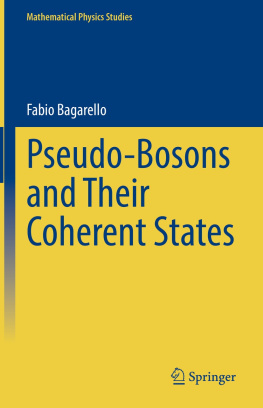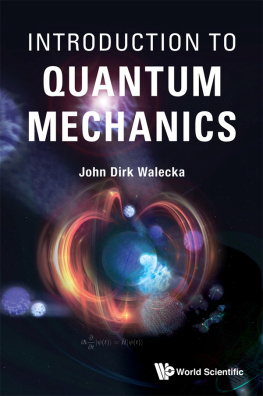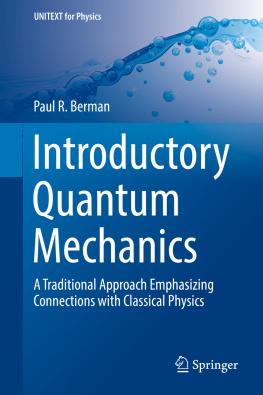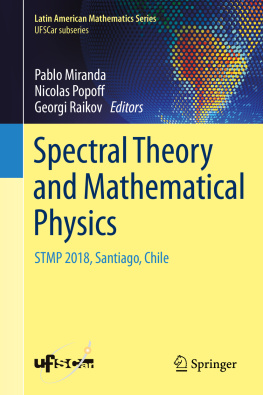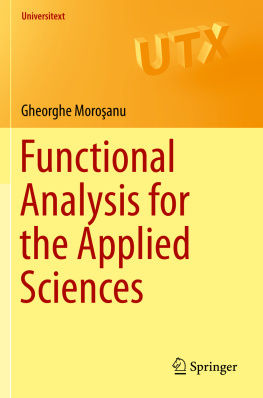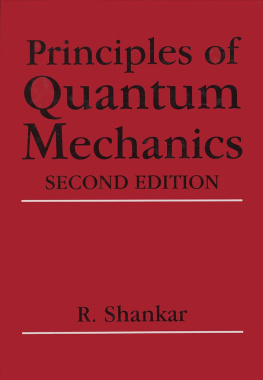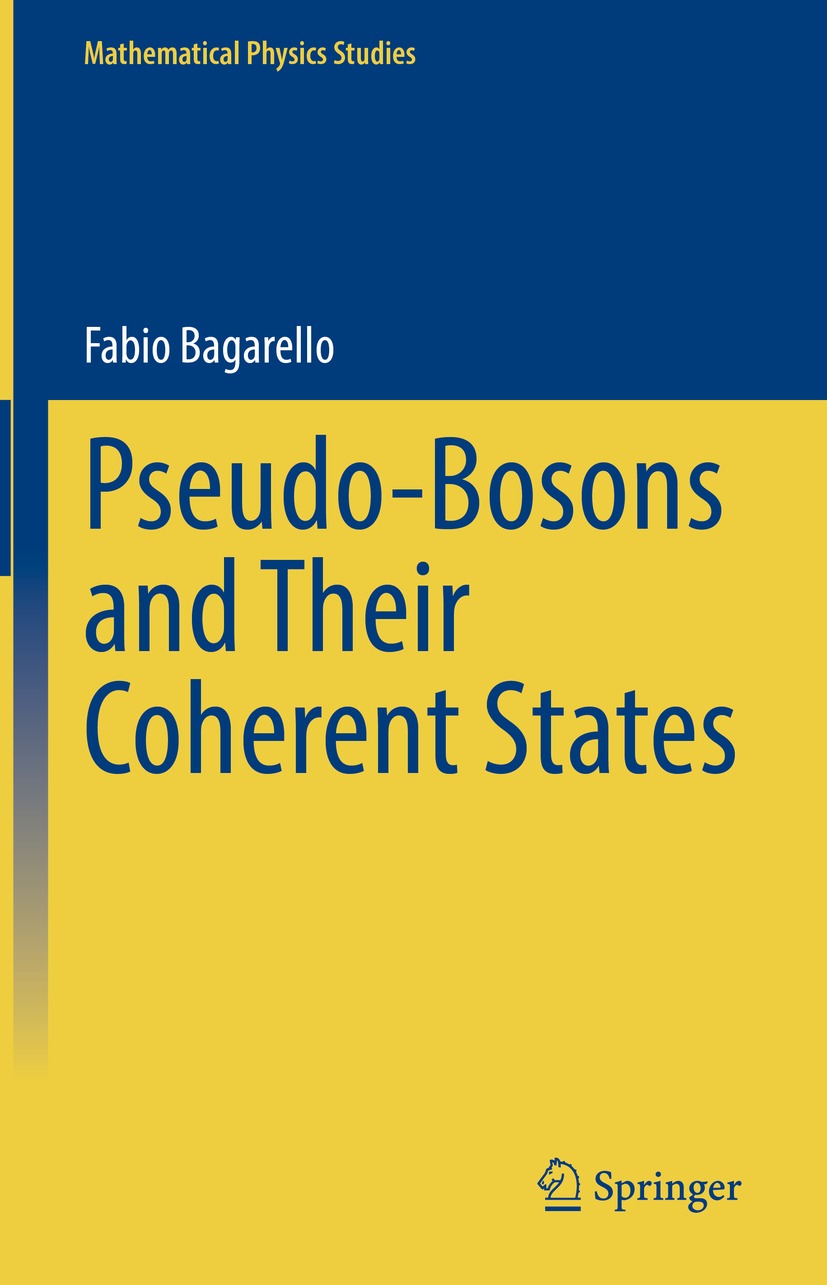Mathematical Physics Studies
Series Editors
Giuseppe Dito
Institut de Mathmatiques de Bourgogne, Universit de Bourgogne, Dijon, France
Edward Frenkel
Department of Mathematics, University of California at Berkley, Berkeley, CA, USA
Sergei Gukov
California Institute of Technology, Pasadena, CA, USA
Yasuyuki Kawahigashi
Department of Mathematical Sciences, The University of Tokyo, Tokyo, Japan
Maxim Kontsevich
Institut des Hautes Etudes Scientifiques, Bures-sur-Yvette, France
Nicolaas P. Landsman
Chair of Mathematical Physics, Radboud Universiteit Nijmegen, Nijmegen, Gelderland, The Netherlands
Bruno Nachtergaele
Department of Mathematics, University of California, Davis, CA, USA
Hal Tasaki
Department of Physics, Gakushuin University, Tokyo, Japan
The series publishes original research monographs on contemporary mathematical physics. The focus is on important recent developments at the interface of Mathematics, and Mathematical and Theoretical Physics. These will include, but are not restricted to: application of algebraic geometry, D-modules and symplectic geometry, category theory, number theory, low-dimensional topology, mirror symmetry, string theory, quantum field theory, noncommutative geometry, operator algebras, functional analysis, spectral theory, and probability theory.
More information about this series at https://link.springer.com/bookseries/6316
Fabio Bagarello
Pseudo-Bosons and Their Coherent States

Logo of the publisher
Fabio Bagarello
Department of Engineering, University of Palermo, Palermo, Italy
ISSN 0921-3767 e-ISSN 2352-3905
Mathematical Physics Studies
ISBN 978-3-030-94998-3 e-ISBN 978-3-030-94999-0
https://doi.org/10.1007/978-3-030-94999-0
The Editor(s) (if applicable) and The Author(s), under exclusive license to Springer Nature Switzerland AG 2022
This work is subject to copyright. All rights are solely and exclusively licensed by the Publisher, whether the whole or part of the material is concerned, specifically the rights of translation, reprinting, reuse of illustrations, recitation, broadcasting, reproduction on microfilms or in any other physical way, and transmission or information storage and retrieval, electronic adaptation, computer software, or by similar or dissimilar methodology now known or hereafter developed.
The use of general descriptive names, registered names, trademarks, service marks, etc. in this publication does not imply, even in the absence of a specific statement, that such names are exempt from the relevant protective laws and regulations and therefore free for general use.
The publisher, the authors and the editors are safe to assume that the advice and information in this book are believed to be true and accurate at the date of publication. Neither the publisher nor the authors or the editors give a warranty, expressed or implied, with respect to the material contained herein or for any errors or omissions that may have been made. The publisher remains neutral with regard to jurisdictional claims in published maps and institutional affiliations.
This Springer imprint is published by the registered company Springer Nature Switzerland AG
The registered company address is: Gewerbestrasse 11, 6330 Cham, Switzerland
What is mathematics? It is only a systematic effort of solving puzzles posed by nature.
Shakuntala Devi
Mathematics is not about numbers, equations, computations, or algorithms: it is about understanding.
William Paul Thurston
Research is what Im doing when I dont know what Im doing.
Wernher von Braun
Preface
Doing research is fun! I like when I find something unclear, and I like more when I understand what is going on. The point is that, quoting George Bernard Shaw, science never solves a problem without creating ten more. For this reason, from time to time, I force myself to stop considering new problems and I try to spend some time to summarize what I have done so far. And the best way to clarify the state of the art is putting all results together, giving them the form of a self-contained book. However, on the way, sometimes I meet crossroads leading me in different directions with respect to those I had in mind at the beginning of my adventure. This is particularly true for these notes, which, in my original idea, should have been a short paper on a very specific topic, the Baker-Campbell-Hausdorff formula for pseudo-bosonic operators. While preparing this paper I realized that, in connection with this formula, there was much more to say, and from several points of view: mathematical details are relevant, but also physical applications are of interest, of course. Then I started to add material to the original manuscript, and the new material required more and more discussions, lemmas, theorems, and convergence tests. And, at a certain stage, it became evident that I was no more writing a (now, long) paper, but something different. For this reason, I also added some introductory material in Chaps. , in the attempt to make the final result sufficiently self-contained. The result is a book which is essentially about several aspects of ladder operators of a special kind. These are deformed versions of the lowering and raising bosonic operators all people working in quantum mechanics know very well. I will discuss the sets of vectors on which they act as ladders, some appearances in quantum mechanics, and the coherent states connected to these deformed annihilation operators. I will also discuss extensions to distributions of this framework, and the use of my particular coherent states in the computation of transition probabilities. I really hope that reading these notes will be interesting, and maybe inspiring, to you. In the meantime, enjoy the reading!
Acknowledgments
Writing a book is a hard task! One needs results to describe, time to put them in the right perspective, more time to write, and still other time to finalize the project. In the meantime, life goes on (and most probably doesnt care at all about your book and any other project you might have!).
But time is not the only ingredient! More than time, I need friends to help me during my work, and a friendly environment around me to work without distractionsor with pleasant distractions. And my friends deserve many thanks for their continuous support. So, thank you Jean Pierre (Gazeau), Camillo (Trapani), Franco (Oliveri), Francesco (Gargano), Miloslav (Znojil), Sergii (Kuel), Hiroshi and Atsushi (Inoue), Andreas (Fring), and Joshua (Feinberg). You have been precious, and very patient, all these years! And it is not over yet! I also like to thank Federico Roccati for his precious reading of the manuscript. And let me also thank my wonderful magnificent six, always on my side, in one way or another: Angelo, Cosimo, Fino, Graziella, Ina, Vincenzo. Thank you very much
As always, I dedicate this book to my beloved parents, Giovanna and Benedetto, and to Federico, Giovanna, and Grazyna, with all my love. I really cannot imagine something better than sharing my days with you!
Palermo, Italy Fabio Bagarello

